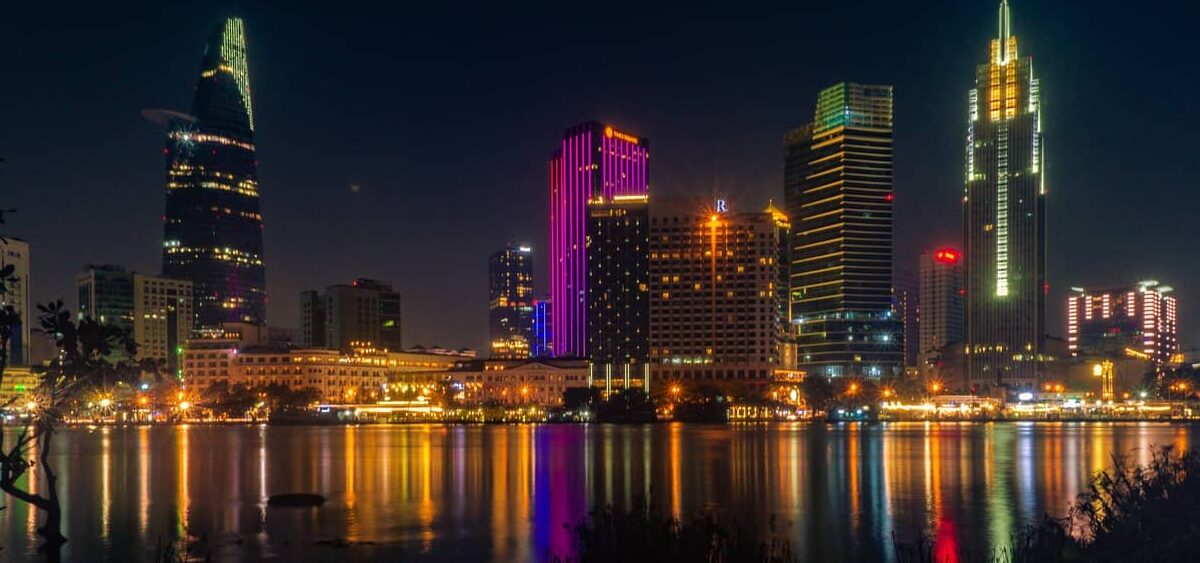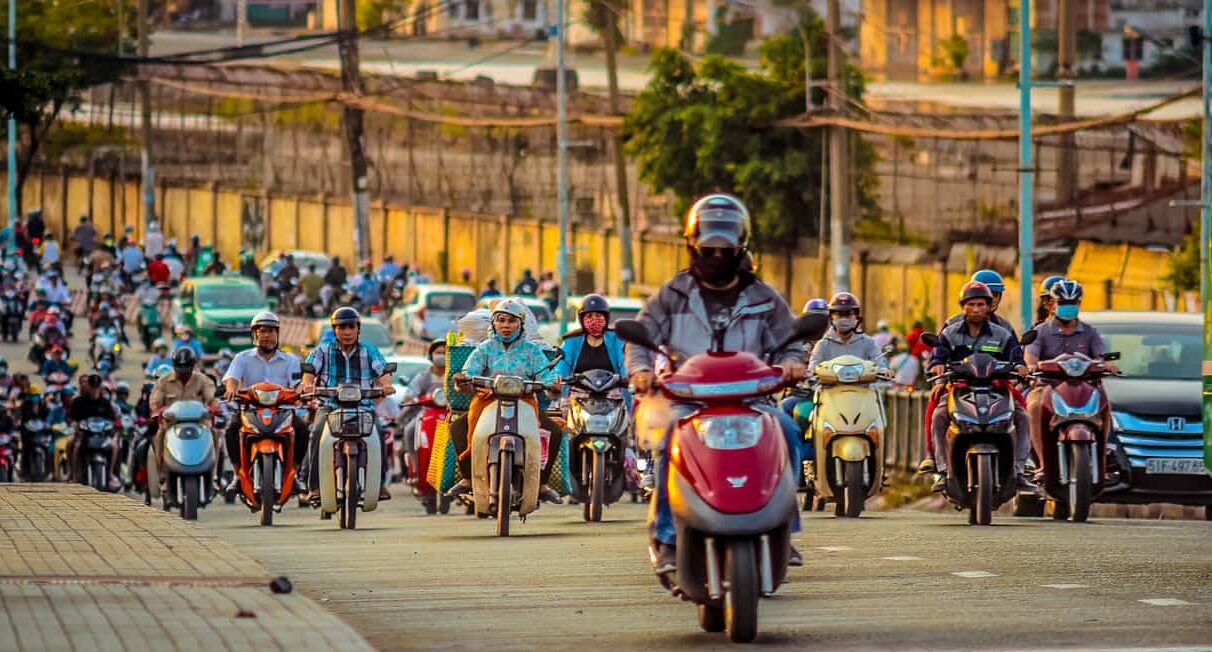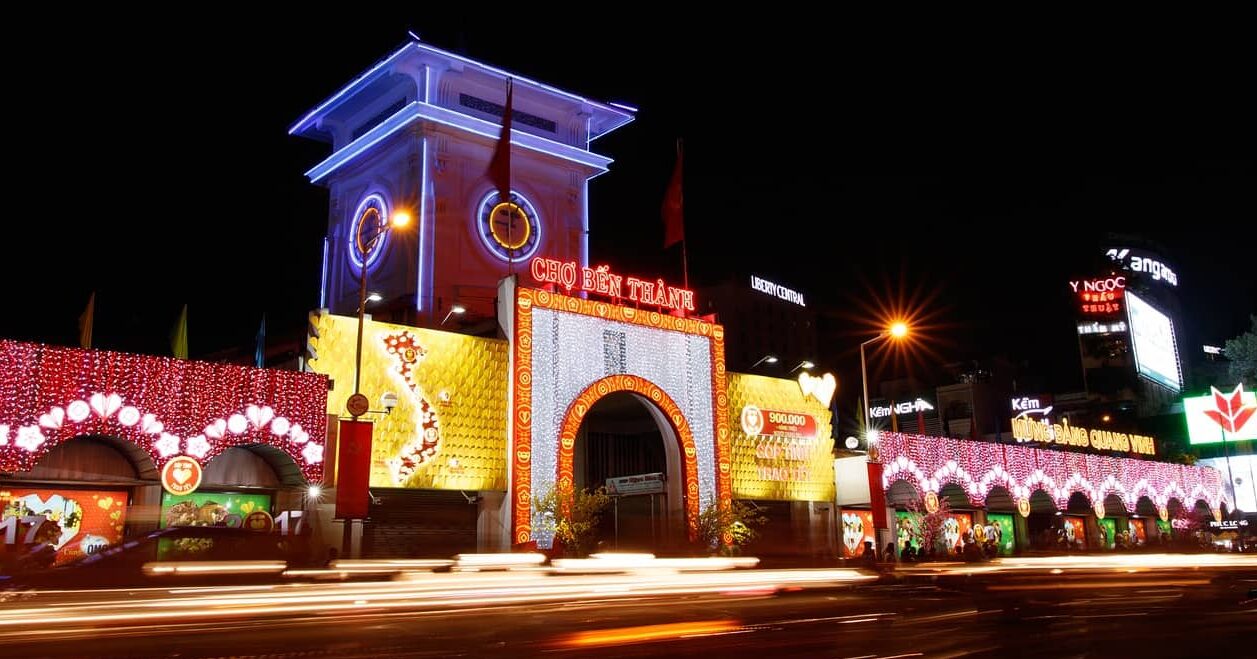
Ho Chi Minh City · City Guide
Planning a trip to Ho Chi Minh City? Our gay Ho Chi Minh City guide is the page for you.

Ho Chi Minh City has been an underdog in south-east Asia holiday destinations for many years, but more and more travelers are discovering this exciting city as a hotspot for street food, rich culture, and vibrant nightlife. The city offers a unique blend of modern and traditional experiences thanks to its fascinating history and western influences into different facets of Asian culture.
Formerly, and up to this day more commonly known as Saigon, Ho Chi Minh City is the largest city in Vietnam. The city got its former name from the Saigon River that runs through the city and empties into the Soai Rap, eventually ending in the Pacific ocean. Nowadays Saigon is referring to the city center in District 1, the main tourist area, while Ho Chi Minh City refers to the entire modern city and all its rural districts.
Vietnam’s largest city has a small but vibrant LGBT+ scene that is attracting gay travelers, locals and expats alike. The majority of nightlife venues are located in the center of the city, Saigon, which makes them easily accessible by taxi, cyclo, or on foot.
Gay Rights in Ho Chi Minh City
Neither being gay nor same-sex marriage is, or has ever been, against the law in Vietnam. Same-sex activity was officially made legal in 2000, and the right to change gender was legalized in 2015. Gay marriage remains, however, legally unrecognized.
The general attitude towards the LGBT community in Vietnam is relaxed and welcoming, similar to Thailand. LGBT culture is increasingly becoming part of the mainstream, which reflects in the blossoming and growing gay scene in Ho Chi Minh City.
One thing to definitely be mindful of is PDA - this is not deemed appropriate in any public spaces and might cause offense to locals. Vietnam is still a socially conservative nation, and many queer people continue to hide their sexuality from their families.

Gay Bars and Clubs in Ho Chi Minh City
The gay bar and clubbing scene in Ho Chi Minh city is small, but it does exist. As LGBT culture is becoming more mainstream, small gay bars are popping up across the country and Ho Chi Minh City. And though there are only a handful of designated gay bars, most bars in the city are welcoming, gay-friendly, and have a mixed crowd most nights. Gay-popular venues can be found on the vibrant De Tham Street, in the heart of the 'backpacker quarter' (District 1).
Thi Bar is among the most popular gay venues in Ho Chi Minh City. Owned and managed by a French-Vietnamese gay couple, this small bar gets very busy on weekends. Live music every night and great happy hour offers make this place worth a visit when in Saigon.
Another exciting venue to visit is Elixir Lounge. The crowd here is mainly straight but very welcoming and gay-friendly. Fancy cocktails, DJ nights every weekend, and special events make this bar a hotspot in District 1.
Due to the current situation, some of the most popular gay bars currently remain closed. Tipsy Unicorn hosts regular drag shows and drag race viewing parties, Le Pub turns from cozy bar bay day into a busy dance floor at night, and Republic Lounge is usually the highlight of a night out with a young and attractive crowd and energetic DJs.
Gay Hotels in Ho Chi Minh City
Ho Chi Minh City has a plethora of luxurious and elegant hotels to offer, as well as some more affordable ones in the backpacker quarter. The majority of hotels are located in District 1, close to tourist attractions, food markets, and gay nightlife.
One of the most popular choices on TravelGay, The Myst Dong Khoi is located in the heart of Saigon, near the river that gave the city its former name. This classy five-star hotel has relaxing spa facilities and a pool, as well as a world-class restaurant with spectacular views of the city.
Hotel Nikko Saigon is a little further away from the busy and hectic area, but still in District 1. Relax and unwind at their stunning outdoor garden or in one of their spacious and luxurious rooms. This five-star hotel's seafood buffet dinner is one of the most talked-about in the city that will please any demanding gourmet.
Other five-star options in District 1 include the Grand Hotel Saigon and the Pullman Saigon Centre. A great choice for travelers on a budget is the Grand Silverland Hotel & Spa and the Hotel Continental Saigon, all located in District 1 and a short taxi ride away from tourist hotspots and gay nightlife.
Gay Saunas and Spas in Ho Chi Minh City
There are a surprising number of male-only saunas and spas in Ho Chi Minh City, especially in the central district of Saigon. Vietnamese guys are usually quite shy so be prepared to make the first move if you are looking for some discrete cruising action. These saunas are also just a great way to relax and make new friends whilst in the city.
Spread over two floors, THE 69 Sauna Zone is featuring a variety of saunas and 'relax rooms' as well as a jacuzzi and a bar. There is also a private 'Tiger Cage' for those feeling more adventurous. Unfortunately, most saunas and spas currently remain closed. Ngoc Diep Spa is located in district 3, so just a short taxi ride away from the city center. Rainbow Spa and NaDam Spa are among the most well-known gay saunas in Ho Chi Minh City and are worth a visit when they open their doors again.

Getting to Ho Chi Minh City
Ho Chi Minh City is served by the Tan Son Nhat International Airport and travelers can reach the city center via airport bus, public bus, or taxi.
The yellow buses regularly go between the airport and the city center, #109 and #49 in particular. Blue public bus #152 serves the airport as well. The fare is inexpensive, costing between 20,000 VND - 40,000 VND ( $1 - $1.80).
Taxis are more costly, but still cheap compared to Europe or North America. Travelers can grab a cab just outside the airport and get to their hotels in the city center within 30 minutes for roughly 150,000 - 300,000 VND ($7 - $14) - tolls included.
Private transfers to hotels and accommodations can be booked directly at the airport.
Trains are also a common way to get to Ho Chi Minh City. From Saigon Station in District 3 travelers can reach other destinations in Vietnam such as Hanoi or Hoi An.
There are a few ferry ports along the Saigon river, taking travelers to smaller towns and villages in the north and the south. This service costs roughly 130,000 VND ($14) each way.
Getting around Ho Chi Minh City
Ho Chi Minh City does not yet have a metro system, however, it is being planned and built as you are reading this. The 'Ho Chi Minh City urban railway project' is planning to bring a rapid transit network to the city by 2024. Construction on the first line has begun in 2012 and is scheduled for completion in 2023. In the meantime, there are plenty of other ways to get around the city:
Bus
Ho Chi Minh City has a comprehensive network of bus routes that are color-coded. Yellow buses function as airport transfers to and from Tan Son Nhat International Airport (SGN). You'll mostly see green buses driving around the city, they stop at most tourist attractions and points of interest across the districts of Ho Chi Minh City. You can also take any of the more rare blue buses to get around.
The bus fare depends on the distance traveled and is usually around 3,000 - 10,000 VND (less than 00.50 USD).
Taxi
An easy and affordable way to get around the city. Car and motorcycle taxis (Xe Om) can be found on every corner - there are around 30,000 active ones in Ho Chi Minh City. Rides can also be booked through apps like Grab and GoJek.
Cyclo
Don't mistake cyclos for bicycles - you're not the one riding them. Exploring the city at a more relaxed pace, cyclos are a popular choice among tourists. Sit back and let the rider show you the city from a different perspective.
By foot
Ho Chi Minh City is big, but many attractions and sightseeing points are within District 1 and are easily walkable. The traffic in the city is chaotic, so caution and attention is advised when wandering the busy streets.
Things to do in Ho Chi Minh City
Ho Chi Minh City offers a wide variety of activities in and around the city. Learn about the city’s rich and fascinating history in one of the museums, explore the river delta or the tunnel, or go on a culinary tour of Vietnamese cuisine. There are also some beautiful temples to visit and learn about the country’s culture and traditions. Some of the best things to do include:
- Wander through the Cu Chi tunnels to get a sneak peek at the underground life of Vietnamese soldiers in the 1950s
- Compare the Notre Dame Cathedral in downtown HCMC to its French cousin in Paris
- Visit the Saigon Post Office to see a fascinating blend of neo-classical European architecture and Asian decorations
- Learn about the Vietnam War in the War Remnants Museum
- Indulge in some of the world's best street food at the Bến Thành Market
- Admire the beautiful Giac Lam Pagoda, one of the oldest temples in the city
- Explore the vast maze of rivers, swamps and islands of the Mekong River Delta by boat, home to floating markets and villages surrounded by rice paddies
FAQs
Visa
Depending on your nationality, you may not be required to get a visa. Citizens from certain countries (UK, USA, and some European and Asian countries) are exempt from this if they stay for 15 days or less. If you are planning to stay for more than 15 days, or your country isn't exempt, a travel authorization costs roughly 50 and is valid for 30 days. You can apply online, or get the visa on arrival. Make sure that your passport is valid for at least 6 more months before traveling.
When to visit
Vietnam’s climate is generally very warm and tropical with daily averages of 24 - 32 °C (76 - 90 °F), which makes it a great destination to visit any time of the year. The most pleasant time to visit Ho Chi Minh City is from November to April when the temperature is moderate and the rainfall is light. If you plan to visit Ho Chi Minh City in the summer months, be prepared for more rainy days due to the monsoon season in the south of the country.
The annual Pride celebrations in Ho Chi Minh City usually take place in September, towards the end of the rainy season but with pleasant temperatures.
Vietnams most important annual festival Tet takes place in late January to mid-February and celebrates the arrival of the new year. The streets are decorated colorfully, the smell of incense is in the air, and glorious fireworks fill the skies.
Money
The currency in Vietnam is the Vietnamese Dong, or VND. One US Dollar converts to around 22,700 VDN, which is the fee most ATMs in the city will charge. Although cash still rules, most venues will accept debit or credit cards. Depending on your bank, conversion fees might be as high as 4%, so it’s best to check with your bank ahead of traveling. Tipping isn’t mandatory but much appreciated.
Join the Travel Gay Newsletter
Have we got something wrong?
Are we missing a new venue or has a business closed? Or has something changed and we have not yet updated our pages? Please use this form to let us know. We really appreciate your feedback.